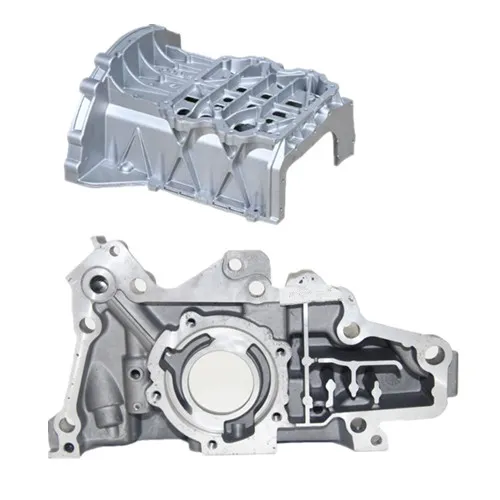Mobile:+86-311-808-126-83
Email:info@ydcastings.com
die casting
Understanding Die Casting A Comprehensive Overview
Die casting is a versatile manufacturing process used to create metal parts with high precision and intricate details. This process involves injecting molten metal into a mold under high pressure, allowing for the production of complex shapes that would be difficult or impossible to achieve with traditional machining methods. Widely employed in various industries, including automotive, aerospace, electronics, and consumer goods, die casting has become a popular choice for manufacturers seeking efficiency and consistency in their production processes.
The Die Casting Process
The die casting process consists of several key steps. First, the appropriate metal alloy is selected, commonly aluminum, zinc, magnesium, or copper, depending on the desired characteristics of the final product. The chosen metal is melted in a furnace until it reaches a liquid state.
Once the metal is molten, it is injected into a steel die, which is meticulously designed to form the intended shape of the component. The injection is completed under high pressure, which not only ensures that the mold is filled completely but also reduces the occurrence of defects such as porosity or air pockets. After the metal has cooled and solidified, the die is opened, and the finished part is ejected.
Advantages of Die Casting
One of the primary advantages of die casting is its ability to produce parts with excellent dimensional accuracy and surface finish. This means that less machining is required post-production, saving both time and costs. Additionally, die casting allows for the production of thin-walled components, which are often lighter and more cost-effective than those produced through other manufacturing methods.
Another significant benefit is the speed of production
. High-volume manufacturing can be achieved since the die casting process is efficient and can operate under continuous cycles. This makes it particularly appealing to industries that require large quantities of identical parts.Die casting also supports the use of a wide variety of alloys, allowing manufacturers to choose materials that best suit their product requirements, whether that involves strength, weight, or corrosion resistance.
die casting

Applications of Die Casting
The versatility of die casting makes it suitable for a broad range of applications. In the automotive industry, die casting is often used for components such as engine blocks, transmission cases, and gear housings. These parts need to be both strong and lightweight, making die casting a perfect fit.
In the aerospace sector, where weight reduction is critical, die casting is employed to produce intricate components that meet stringent safety and performance standards. Electronic products, too, benefit from die casting, as the process can create enclosures and heat sinks with precise dimensions and superior thermal conductivity.
Challenges and Considerations
Despite its many advantages, die casting is not without challenges. The initial cost of creating the dies can be high, making this process more suitable for large production runs rather than small quantities. Additionally, factors such as design complexity, alloy selection, and cooling rates must be carefully managed to avoid defects and ensure quality.
Furthermore, as industries focus on sustainability, the environmental impact of die casting has come under scrutiny. Efforts are being made to improve recycling processes for metal scraps and reduce energy consumption during production.
Conclusion
Die casting remains a cornerstone of modern manufacturing, providing an efficient means to produce high-quality metal parts. Its ability to offer excellent precision, rapid production, and compatibility with various alloys makes it invaluable across numerous industries. As technology advances and more sustainable practices are adopted, die casting will likely continue to evolve, paving the way for even greater innovations in manufacturing. Whether for automotive, aerospace, or consumer electronics, the impact of die casting is profound and ongoing, shaping the future of product design and production.
-
Why Should You Invest in Superior Pump Castings for Your Equipment?NewsJun.09,2025
-
Unlock Performance Potential with Stainless Impellers and Aluminum End CapsNewsJun.09,2025
-
Revolutionize Your Machinery with Superior Cast Iron and Aluminum ComponentsNewsJun.09,2025
-
Revolutionize Fluid Dynamics with Premium Pump ComponentsNewsJun.09,2025
-
Optimizing Industrial Systems with Essential Valve ComponentsNewsJun.09,2025
-
Elevate Grid Efficiency with High-Precision Power CastingsNewsJun.09,2025











